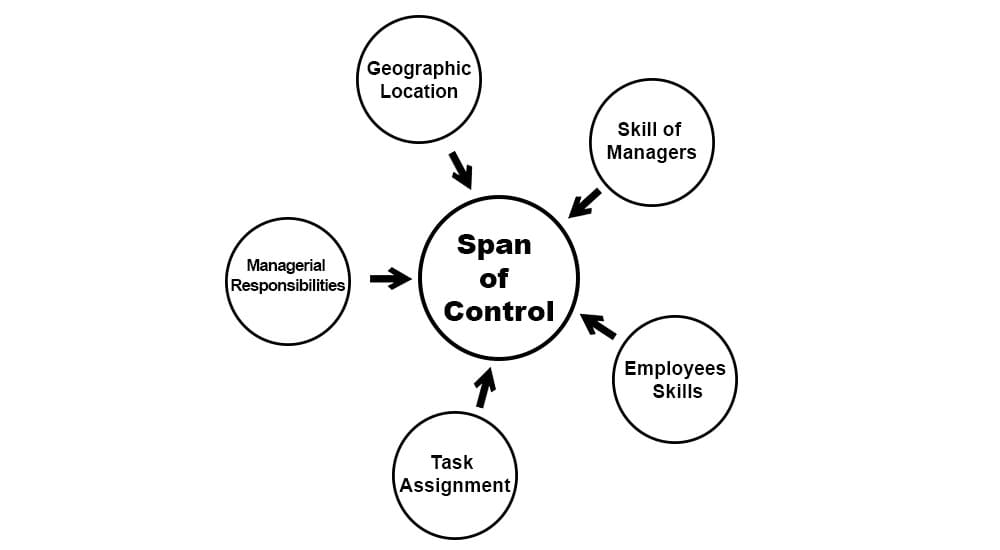Definition: A span of control, also known as a span of management, is a resource management term and refers to the number of employees who report to a manager.
A span of control means a manageable number of employees that a manager can control. The bigger the staff, the bigger the span of control.
In the past, managers used to have, on average, four employees to supervise. Later, it increased to over ten employees per manager due to the introduction of information technology that made monitoring and controlling easier.
Now organizations can monitor more staff with fewer managers and lower costs.
These days, due to the adoption of modern organizational concepts, teams are multidisciplinary with experts from different departments and reporting to different supervisors, making the concept of a span of control less important.
Factors Affecting Span of Control

Many factors affect the span of control; some of them are given below.
- Geographic Location: If the team is spread out in different geographic locations, managers will find it difficult to manage their subordinates, and the management span will be small.
- Skills of Managers: A skillful manager can manage more subordinates, so they will have a bigger span of management.
- Employees’ Skills: If subordinates are skillful, they will require less supervision, and managing them will be easier. Hence, the span of control will be larger for managers.
- Task Assignment: If the assigned tasks are repetitive and similar, the staff will be experienced and require less supervision and control. Hence, the span of control will be bigger.
- Managers’ Responsibilities: If managers have other organizational responsibilities apart from managing the team, their span of management will be smaller.
Types of Span of Control
An organization can have two types of a span of control depending on its structure.
- Wide-Span of Control
- Narrow Span of Control
Wide Span of Control
Organizations with flat structures will have few hierarchical levels and a wide span of control. Here, supervisors supervise many employees.
As there are fewer hierarchical levels, it has a lower cost and is very flexible in adapting to changes.
The main advantage of this span of control is cost advantage, reduced planning time, and well-trained subordinates.
The main disadvantage of this type of control is employee management if the amount of employees is large. Also, sometimes a large number of employees causes confusion and makes management difficult.
Narrow Span of Control
Organizations with many hierarchical levels will have a narrow span of control. Here, managers supervise fewer employees.
A narrow span of control is useful with complex work requirements where constant managerial support is needed.
The main advantage of this control is easy supervision, management, and effective planning and decision-making.
The main disadvantage of this span of control is its cost. More managers mean more cost. Also, more hierarchical levels cause delays in communication.
Summary
An organization can have a span of control that depends on its requirements. For simple work with less supervision, a wide-span network is suitable. However, complex work requires close monitoring, so this type needs narrow span control.
Big organizations can have both spans of control. For example, the top-level has a narrow span of control, and the lower level has a narrow span of control.

Thre last sentence is ambiguous “Big organizations can have both spans of control. For example, the top-level has a narrow span of control, and the lower level has a narrow span of control.”
Pls explain.